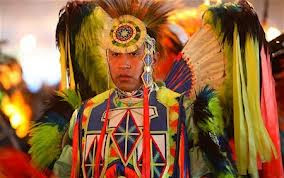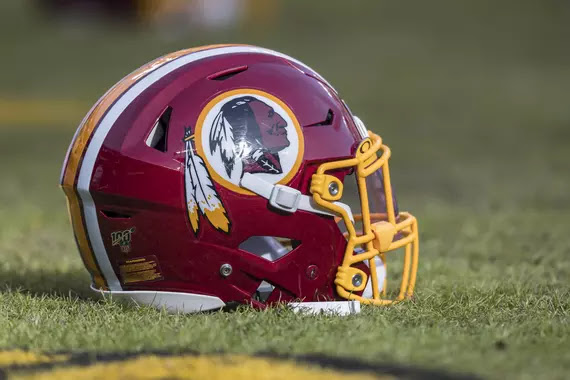American Indian tribe ponders tourism vs. cultural mores
Kristi Eaton / WOUNDED KNEE, S.D.
The Oglala Sioux Tribe occupies a seemingly prime piece of South Dakota — a vast, scenic reservation that stands near a crossroads for tourists visiting Mount Rushmore, the Badlands, the historic Old West town of Deadwood and other popular sites.
But don't look for museums, hotels, restaurants or many restrooms here on the Pine Ridge Indian Reservation. The Lakota make little effort to attract visitors or tourism dollars, despite the fact that they are one of the nation's poorest tribes.
A generation after many other American Indians sought to harness their history for profit, the Oglala Sioux are still debating how much culture they are willing to share.
"When you take a community of people where at one point our language was outlawed and parts of our culture were outlawed, it's hard for us to, I guess, open up to the idea of sharing that in a way to make money off of it," said Nick Tilsen, executive director of Thunder Valley, a nonprofit group on Pine Ridge set up to keep traditional Lakota culture alive among young people.
Tourism is big business for some of the country's best-known Indian tribes, which reap a fortune from casinos and other business ventures.
The Navajo Nation in the Southwest welcomed some 600,000 visitors who spent $113 million last year. In Oklahoma, nearly 45,000 people visited the Cherokee Nation's Heritage Center museum.
But the Oglala Sioux stand apart in southwestern South Dakota. They have just one tribally run casino-and-hotel complex, the Prairie Wind, on the western side of the reservation and recently opened a smaller casino in Martin, a town near the reservation's eastern edge.
The tribe, Tilsen said, is not "totally against" development. "I think we're at the stage of, 'What parts do we want to protect, and what parts are we willing to share, and what does that look like?'"
Some tribal members think the site of the Wounded Knee Massacre, where more than 250 men, women and children were killed by the 7th Cavalry in 1890, should be turned into a tourist attraction with a museum. Others are fiercely opposed to development, saying it would be disrespectful to the dead.
The talk of development "hasn't matured yet," said Ivan Sorbel, executive director of the Pine Ridge Chamber of Commerce.
That doesn't stop people from coming. On a recent afternoon, two carloads of visitors from Texas and Iowa stopped within a 20-minute span to walk through the site, a National Historic Landmark.
The massacre is "one of the greatest crimes in U.S. history," said Gary Bishop, who traveled with his wife from the Dallas area.
But the couple's trip was unlikely to help the reservation much. They were staying at a hotel in Rapid City, about two hours northwest of the site.
Brianne Hawk Wing, an Oglala Sioux tribal member, arrived with her nephew and sister as soon as she saw visitors. Hawk Wing said she has been unable to get a job in tribal government, so she sells trinkets such as dream catchers for $20 to tourists at the site.
The tribal and federal governments are the largest employers on the 2.7 million-acre reservation, which includes some of the poorest counties in the U.S. The unemployment rate can be as high as 80 percent. Attracting investors is difficult because tribal members are often suspicious of outsiders.
It's unclear how many tourists visit the reservation or the Wounded Knee site. No one keeps accurate records. Still, many tribal members such as Hawk Wing want the site to remain as is.
"See, it's free. No one has to pay for anything," she said as she pointed out where her great-grandfather is buried.
A museum commemorating the massacre was ransacked and its contents lost in 1973. Another museum dedicated to the massacre draws thousands of people annually, but it's 100 miles north of the reservation in Wall, S.D. — also home to Wall Drug, a famous cluster of stores and tourist attractions offering Western kitsch.
The Wall museum is not affiliated with the Oglala Sioux, although co-founder Lani Van Eck said the facility had the blessing of Wounded Knee residents when it opened in 2003. She and the other co-founders decided to build it along busy Interstate 90 to attract more visitors.
Maps are available for anyone who wants to go to the actual site. But the museum doesn't bring revenue or jobs to the reservation, two things the Oglala Sioux are desperate for.
Also beyond the reservation's borders is the Crazy Horse Memorial, which honors the famed Lakota warrior and leader who played a key role in the 1876 defeat of the 7th Cavalry at the Battle of Little Bighorn in Montana. The memorial was started in 1948 and has yet to be finished, but it still draws more than 1 million visitors annually to a site about 20 miles from Mount Rushmore.
Staff members at the memorial and other South Dakota tourist attractions have begun taking part in training led by the Pine Ridge Chamber of Commerce.
But don't look for museums, hotels, restaurants or many restrooms here on the Pine Ridge Indian Reservation. The Lakota make little effort to attract visitors or tourism dollars, despite the fact that they are one of the nation's poorest tribes.
A generation after many other American Indians sought to harness their history for profit, the Oglala Sioux are still debating how much culture they are willing to share.
"When you take a community of people where at one point our language was outlawed and parts of our culture were outlawed, it's hard for us to, I guess, open up to the idea of sharing that in a way to make money off of it," said Nick Tilsen, executive director of Thunder Valley, a nonprofit group on Pine Ridge set up to keep traditional Lakota culture alive among young people.
Tourism is big business for some of the country's best-known Indian tribes, which reap a fortune from casinos and other business ventures.
The Navajo Nation in the Southwest welcomed some 600,000 visitors who spent $113 million last year. In Oklahoma, nearly 45,000 people visited the Cherokee Nation's Heritage Center museum.
But the Oglala Sioux stand apart in southwestern South Dakota. They have just one tribally run casino-and-hotel complex, the Prairie Wind, on the western side of the reservation and recently opened a smaller casino in Martin, a town near the reservation's eastern edge.
The tribe, Tilsen said, is not "totally against" development. "I think we're at the stage of, 'What parts do we want to protect, and what parts are we willing to share, and what does that look like?'"
Some tribal members think the site of the Wounded Knee Massacre, where more than 250 men, women and children were killed by the 7th Cavalry in 1890, should be turned into a tourist attraction with a museum. Others are fiercely opposed to development, saying it would be disrespectful to the dead.
The talk of development "hasn't matured yet," said Ivan Sorbel, executive director of the Pine Ridge Chamber of Commerce.
That doesn't stop people from coming. On a recent afternoon, two carloads of visitors from Texas and Iowa stopped within a 20-minute span to walk through the site, a National Historic Landmark.
The massacre is "one of the greatest crimes in U.S. history," said Gary Bishop, who traveled with his wife from the Dallas area.
But the couple's trip was unlikely to help the reservation much. They were staying at a hotel in Rapid City, about two hours northwest of the site.
Brianne Hawk Wing, an Oglala Sioux tribal member, arrived with her nephew and sister as soon as she saw visitors. Hawk Wing said she has been unable to get a job in tribal government, so she sells trinkets such as dream catchers for $20 to tourists at the site.
The tribal and federal governments are the largest employers on the 2.7 million-acre reservation, which includes some of the poorest counties in the U.S. The unemployment rate can be as high as 80 percent. Attracting investors is difficult because tribal members are often suspicious of outsiders.
It's unclear how many tourists visit the reservation or the Wounded Knee site. No one keeps accurate records. Still, many tribal members such as Hawk Wing want the site to remain as is.
"See, it's free. No one has to pay for anything," she said as she pointed out where her great-grandfather is buried.
A museum commemorating the massacre was ransacked and its contents lost in 1973. Another museum dedicated to the massacre draws thousands of people annually, but it's 100 miles north of the reservation in Wall, S.D. — also home to Wall Drug, a famous cluster of stores and tourist attractions offering Western kitsch.
The Wall museum is not affiliated with the Oglala Sioux, although co-founder Lani Van Eck said the facility had the blessing of Wounded Knee residents when it opened in 2003. She and the other co-founders decided to build it along busy Interstate 90 to attract more visitors.
Maps are available for anyone who wants to go to the actual site. But the museum doesn't bring revenue or jobs to the reservation, two things the Oglala Sioux are desperate for.
Also beyond the reservation's borders is the Crazy Horse Memorial, which honors the famed Lakota warrior and leader who played a key role in the 1876 defeat of the 7th Cavalry at the Battle of Little Bighorn in Montana. The memorial was started in 1948 and has yet to be finished, but it still draws more than 1 million visitors annually to a site about 20 miles from Mount Rushmore.
Staff members at the memorial and other South Dakota tourist attractions have begun taking part in training led by the Pine Ridge Chamber of Commerce.
The goal is to help teach employees about Lakota history so they can share that information with tourists, who might then drive to the Pine Ridge reservation.



Comments
Post a Comment